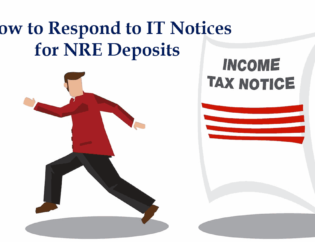
A lot of people are moving back to India because of multiple reasons like retirement, career – business or job, family or visa issues or any other reasons. “Why move” is THE most important decision. Once you have made up your mind, the next thing comes to mind is how best to move i.e. when, where, how, what, how much, how quickly, etc. to move.
While “Why move” is an emotional decision, there are 10 financial decisions also to be considered for better planning of tax and quicker growing of wealth:
1. When to Move:
Moving to India results in a change of a residential status in India – both under FEMA and under the Income Tax Act. From the day you move back to India (with an intention to stay in India for an uncertain period), you become an Indian resident under FEMA. However, you may not be an Ordinary resident for 2-3 years depending on when you move.
By carefully planning when to move, a person may stay “Not Ordinary Resident” under the Income Tax Act for one more year giving one additional year of exemption from tax of FCNR FD interest, of foreign income and from reporting of global assets to the IT department.
2. How to Manage Current Investments in India:
With difference in residential status, investments in India need to be carefully planned on a tax advantage basis before the move. For example, interest on NRE account is exempt for a non-resident under FEMA which considers returning person as resident from the DAY of return. So NRE interest becomes taxable from the day of return.
However, if money is invested in FCNR FD, a returnee can continue the FCNR deposits until maturity and the interest on FCNR deposits is exempt until a person becomes an Ordinary Resident under the Income Tax Act.
After return to India, a returnee needs to update his/her KYC from non-resident to resident, close NRO and NRE accounts and open resident savings accounts. All accounts with financial institutions or intermediaries as well as investments in shares, mutual funds, deposits, bonds or other securities should also updated from non-resident to resident and linked with the resident savings bank account. All these investments could be better planned to save taxes and future compliance queries.
Planning current investments in India, before the move, could save a lot of tax while being fully compliant with all income tax, FEMA and other applicable laws.
3. How Much Money to move?
As you are moving to India permanently, you would be buying a home in India in INR. Also all your expenses – living, entertainment, social, leisure, education, medical, food, travel, etc. would in in INR only. Also, your capital expenses like buying a car, electronics, gadgets, home, etc. would also be in INR. You would be making investments – bank accounts, FDs, mutual funds, stocks, PPF, etc. in INR too. So, it is advisable to transfer majority of funds to India and have your assets in local currency i.e. INR.
However, it is not recommended to transfer all the assets to India as INR is not fully convertible and there are restrictions about investments out of India by Indian residents. Also, the equity and bond markets are not deep or wide or efficient enough compared to other developed economies. Additionally, many securities are not listed in Indian markets. That being said, very limited investment options are available for designing a truly globally diversified portfolio.
For deciding how much money to move, following 2 principles would simplify the decision:
- Keep 75% assets in the country where you are planning to stay (migrating to)
- Better International Diversification options are available out of India
4. In whose name to transfer the funds?
In India, there is no joint income tax return and while assets can be owned jointly, the 1st holder is treated as the legal owner and income is treated, reported and also taxed in the first holder’s name only. So, it is advisable to open 2 bank accounts in India for you and your spouse and transfer funds separately from abroad.
As per the income tax and gift tax laws in India, transfer to spouse or daughter-in-law attracts complicated clubbing provisions of the income tax i.e. gifted assets are considered to be owned by the transferor and income is included (clubbed) in the name of transferor. How much money to be transferred in the husband’s, wife’s, or parents’ accounts before, and after moving back to India needs to be planned for better tax planning.
5. When to move the funds?
If you are planning to earn tax free secured income and don’t want to take any currency risk, FCNR FD could be a good option. However, you need to invest in FCNR FD BEFORE you put a step in India. Similarly, if you want to transfer funds to NRE account, better to do BEFORE moving to India.
As transferring money to spouse could attract clubbing provisions, moving funds before coming to India in her account is advisable.
Any gift to parents or siblings does not attract gift / income tax in India and can be given anytime so you can either transfer funds before or after your return to India. However, gift tax laws of your country of residence also need to be considered.
If you are planning to invest in investment options that are available only to residents (e.g. PPF), you can do that only after your return.
The movement is of funds and not assets so it may require liquidating assets in your home country. As selling assets could result in capital gain subject to income tax, tax laws of India and home country need to be considered. Depending on your strategic investment plan or Investment policy statement (IPS), you need to decide when to move funds – before, while or after your return to India.
6. How to move the funds?
When an NRI decides to move to India, the rate at which money is transferred is extremely important. Even getting Rs. 0.25/$ translates into savings of Rs. 25,000 per $100k.
For transferring high amounts, the cheapest and fastest way to transfer money would be to wire the funds to the bank in India and negotiate for a better rate even if you have to pay about $50 for the international wire.
If you look for the buy rate and sell rate of any bank, usually, there is a difference of about Rs. 2/$ i.e. if exchange rate is Rs 75/$, buy rate would be Rs. 74/$ and sell rate would be Rs. 76/$. The Rs. 1/$ is bank or money changer’s average profit on either side. If you can negotiate with bank to have a better rate, I am sure you would be able to get at least 0.50/$ more. Sometimes, for big amount, they do give benefit of 0.90 or even 0.95/$ better than the card rate (disclosed rate).
Also, the key is the actual rate at which the conversion is made. Most of the times, the bank would say they give the best rate (e.g. 0.80/S better) but in reality, it may not be true as the exchange rate fluctuates during the day. The best way would be to have a contact with the bank treasury and know the real IBR at the time when money is converted (click of the button). Then only you can be sure to have received the best rate.
Don’t use the free money exchangers for remitting money higher than $10,000 as there is no free lunch. While they may offer free service, they more than recover their income in exchange conversion rates. For transferring less than $10,000, you may select any money transfer agents/changers that give the highest rate.
7. How to structure current and future income in India?
How an NRI / OCI plans and structures his/ her family’s income in India after the move is THE MOST IMPORTANT. Unless taking a break or retiring, returning NRIs would have managed to secure high annual income in India. It is possible that the returnee may be working for the current employer or joining a new position. S/he may also start a new business or a profession or join the family business.
The key is how income is spread among various family members efficiently. If you are earning Rs. 1-2 Cr., your marginal tax rate in India would be 35.88%. And, if your wife is not working or your parents are retired, their income may not be taxable at all (0%). So if you earn Rs. 100 as interest, while you would be paying 35.88% tax, your wife or parents would have paid 0% tax. It is critical to plan income tax for entire family to save significant tax.
If you are employed in India, you can claim only standard deduction of Rs. 50,000 as per current laws. If returnees work for the same employer, they may be flexible to change the contract from employment to consulting. With consulting as a business, various expenses – salary, motor car, rent, office, telephone, internet, travelling, stationery, depreciation, etc. can be claimed to reduce taxable income. While expenses can be claimed, compliance related to keeping accounts, records, income tax, GST, TDS, returns, audit, etc. would also increase.
8. How to manage Out of India Investments?
Usually, an ex-NRI/PIO would like to maintain investments out of India as an international diversification, or for kid’s future requirements or when not able to sell / redeem because of certain restrictions. Out of India Investments usually include bank accounts, brokerage accounts, retirement accounts, RSUs, vested/unvested equities, immovable properties, etc.
It is important to decide which investments to keep, in whose name, for what purpose and for how long. Also, asset allocation and managing investments that are truly diversified globally is critically important.
Also, as per the Income Tax Act, global income is taxed in India only if the residential status is “Ordinary Resident”. An NRI / OCI before returning or while maintaining “Not Ordinary Resident” status can plan the investments to reduce the income tax.
For example, a person invested $100 in 2015, which became $200 in 2021. He moves to India in 2021 and become Ordinary Resident from 2023-24. If the value increases to $230 in 2023-24 and investment is sold, he could be taxed for $130 as capital gain in India. However, the investment can be managed in a way that could significantly reduce taxable gain to $30 or even less in India. The tax laws of foreign country also need to be considered.
9. How to save tax and comply with laws of multiple countries?
India has signed DTAA (Double Tax Avoidance Agreement) with most of all the major countries. The objective of DTAA is NOT to pay tax twice on the same income. Some incomes are taxed in the source countries or in resident countries of both the countries.
The concept of DTAA is to pay tax that is at a higher rate. So for example, if an income is taxed at 10% in one country and 15% in another, you may have to pay tax 10% in one country and 5% in another country (15% tax less 10% DTAA benefit) or pay 15% tax in another country and pay 0% ta (10% tax less 10% benefit). Usually, you would not get a refund of tax paid in one country for overpayment of tax in another country.
Understanding your local taxes, Indian Income taxes as well as DTAAs between your home country and India could save a lot of tax.
10. Whether to work with an advisor? If yes, Who can be the right advisor?
All the financial decisions relating to moving back to India are not independent and are not to be answered in chronological order. They are intertwined and answer of one question depends on others.
Additionally, the tax laws and tax rules are constantly being amended. The investment products, securities, processes, requirements and regulations are always changing. The rules, ability, offerings and requirements of banks, financial institutions or companies offering investments products are also changing as they follow local and global compliance, which is also changing.
The key for smooth and successful transition is ability to make right decisions and the quality of decisions depend on the quality of relevant information. In this technological age, information is overloaded and there is a lot of half-truths and misinformation. It is extremely difficult to find the quality information that is actually relevant and useful.
An advisor should have balance of knowledge and experience in
(a) Indian Income Tax and FEMA Laws
(b) Your home country’s income tax laws
(c) Gift tax and money transfer rules and procedures
(d) Global Compliance requirements
(e) Structuring your Income in India
(f) Tax efficient Investment and Wealth Management considering (a) to (e).
While it is advisable to work with 1 advisor than multiple advisors, if you choose to work with multiple advisors, make sure your income tax consultant has knowledge of international taxation, FEMA, and investment management and your investment advisor has knowledge of FEMA and income tax – India and international.
Importance of 10 Financial Decisions
When someone plans to move with family, it is extremely difficult, Gigantic, Huge, Life Changing decision. In comparison, when to move or when, in whose name, how and how much to move funds appear very small decisions. And, sometimes, the person may not have control on the same. And, having a right advisor may not be in the radar too.
However, these are considered Extremely High ROTI (Return Over Time Invested) decisions.
For example:
- If you could plan your move in such a way that you can maintain Not-Ordinary Resident status with the income tax department for one more year (Additional 1 year of not-ordinary residential status gives additional 12 months to plan for your foreign income and assets)
- If you could structure your income in India considering both Indian and foreign tax laws only once that saves taxes every year
- If you could plan your India NRE FD in such a way that after moving, your tax on interest income is reduced from 30%++ to 20%++ or 10%++ or even 0%.
- If you could manage your funds out of India so your taxable income in India is reduced or is not taxed.
- If you could transfer funds that gives you better exchange rate by even Rs. 0.50/$.
- If you could transfer funds in the name or give gift in a way the overall tax liability as a family is minimized.
- If you could manage India and out of India investments in compliance with applicable laws so there is no notices or scrutiny of investments or income in any country.
- Many, many more……
Summary:
Moving Back to India is a HUGE decisions affecting every aspect of life and having long term financial as well as emotional consequences.
These 10 questions / decisions, not only helps financially – save tax and grow wealth but also emotionally – getting a peace of mind about tax and reporting compliance without worrying about future queries or notices from the tax authorities.
Good luck in making informed decisions and best wishes for moving back to India. If you need any guidance or help in making decisions or want our help in the transition, please contact us.








